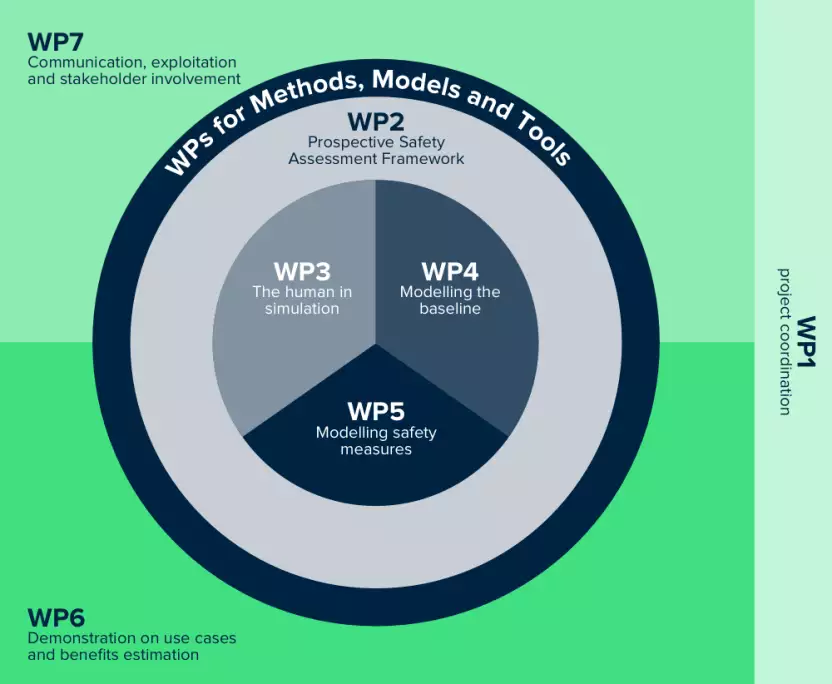WP1 deals with project management and coordination.
Work Packages
V4SAFETY’s methodology consists of a user-centric (WP7) collection of state-of-the-art methods followed by aggregating, and explaining the methods (WP2, WP3, WP4 and WP5), closely interacting with the application in use cases (WP6).
It will document assumptions, describe framework validation processes and prescribe documentation templates to make the accuracy, comparability and validity of the assessment clear (WP2).
All work packages will run in parallel during the first 33 months of the project, allowing early interaction and alignment, optimising and streamlining the process as well as the final deliverables.
Work Packages
WP 1
WP 2
WP2 develops a comprehensive prospective safety assessment framework that uses the Safe System Approach to guide different road safety solutions. In addition this WP develops a method to project the results to the geographical area of interest and apply them over time. It provides easily understandable instructions for applying the framework and validates the methods in the framework.
WP 3
WP3 provides guidelines for the development, validation, and use of computational model of road-user behaviour in virtual safety assessment. It aims to model road user behaviour holistically, considering behaviour in everyday traffic as well as in the pre-crash and in-crash phases of traffic conflicts. WP3 provides guidelines for integrating models for injury assessment into the toolchain. Moreover, WP3 adapts and extend available models to the specific use cases of WP6.
WP 4
WP4 provides an overview of the different types of data sources used in predictive safety assessments for: baseline creation, model parametrisation, and result extrapolation. WP4 creates guidelines for converting the available data into scenarios, for simulation-based assessments, and discusses the suitability of different methods for generating a baseline that represents the future.
WP 5
WP5 develops guidelines to define the structure of an effectiveness assessment simulation and suggests which simulation domains should be used and how to choose appropriate modelling approaches for pre- and in-crash phases in the assessment. WP5 also documents available data exchange formats and protocols to be used by the models, and provides the models and simulation structure for the safety measures in the use cases of WP6.
WP 6
WP6 applies the complete V4SAFETY safety assessment framework to a selection of use cases, indicating the total costs and safety benefits. This WP extrapolates the performance assessment results to a region of interest and considers the possible changes over time, making use of methods developed in WP2 and WP4. Use cases include in-vehicle technologies, infrastructure-related safety solutions and regulatory changes. Use cases are discussed with sister projects PHOEBE and SOTERIA that were granted in the same call (CL5-2022-D6-01-06). WP6 defines the requirements for performance metrics and provides a template to facilitate comparisons between assessment studies. The results are documented as models reports for future assessments.
WP 7
WP7 manages the involvement of all stakeholders as well as ensuring the communication, dissemination and exploitation of the project’s results, throughout the project and beyond its lifetime.
